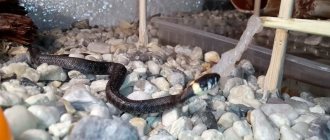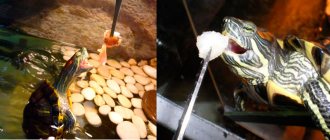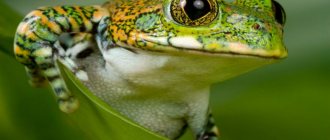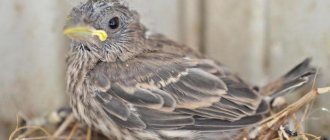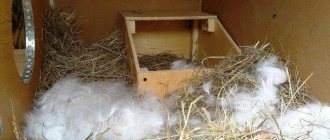To start or not?
Today, the inhabitants of home exoterrariums are a variety of species of lizards: from iguanas to geckos. Some people who like to tickle their own nerves even get huge monitor lizards or snakes. And, of course, the specifics of keeping this pet (temperature conditions, feeding ration, and care nuances) completely depend on who exactly will live in your terrarium. Therefore, it is not enough just to familiarize yourself with the general recommendations for keeping reptiles in the house; you need to study in detail all the available information about exactly the species that you are planning to keep. Indeed, despite their rather repulsive appearance for many people, snakes, iguanas and other creatures in reality are very fragile and vulnerable creatures. This is especially true for chameleons - the strangest and most mysterious inhabitants of planet Earth.
Chameleons are medium-sized insectivorous lizards that most often live on tree branches. The unique ability of these creatures is that they can use camouflage (the color of a chameleon can vary from gray to light green). With such changes in skin tone, it can be extremely difficult to see them in the mass of foliage.
It is this feature that has become a fashionable “trick” of chameleons, which most of all attracts exotic fans to reptiles. This is why chameleons so often become pets to be proud of and show off. However, simply having such a lizard and providing it with the most comfortable living environment is not the same thing. Beautiful creatures by nature have weak immunity and vulnerability to various kinds of diseases - therefore they require especially careful and painstaking care.
Are you ready to create conditions for this creature that ideally replace its usual habitat? Will you be able to take good care of him and devote time to him? These questions are worth thinking about even before you buy a pet.
Types of silk effect paints
In the market of paints and varnishes, decorative paints of this kind are especially distinguished. Most often they are intended for finishing interiors that claim to be rich and luxurious apartments.
Silk effect paint. Photo
There are several types of “silk” paints.
- Pearlescent paints with a metallic shine effect. The color range is represented by a rich selection of the most noble shades: gold, silver and bronze. The paint is applied in several layers. Only if all the rules are followed correctly will the last layer sparkle with the desired color.
- Chameleon paint or paint with a wet silk effect. As the name suggests, at different viewing angles, the painted surface will sparkle with different colors. The main tone of the paint is provided by the primer or substrate. And on top they are covered with sparkling pigments.
- Granular mosaic paint. This type is used to emphasize individual objects or details in a setting.
In any case, no matter what type of paint you choose, the design of your premises will turn out to be very stylish, unusual and even luxurious.
Chameleon appearance
Representatives of the chameleon family have quite strong differences in appearance from other lizards (they were even separated into a special suborder of worm-tongues: they have so many different things from other reptiles). Fingers fused together and eyes rotating independently of each other - all this can make an indelible impression on the future owner of the chameleon. But this is not all that makes these lizards special in appearance and body structure. They can change their skin tone and blend in with their environment (an escaped chameleon is a real adventure with a long search for the prankster), and their anatomical and morphological structure indicates that the ancestors of these creatures were ancient lizards or even dinosaurs. By analogy with extinct huge monsters, they do not have a bone marrow (it is replaced by a cartilaginous “cap”), and in the chameleon’s lungs there are many additional blind processes that help the animal swell and frighten its enemies and rivals in mating games, making a terrifying impression.
The chameleon family includes about 80 species of these reptiles and several genera, living mainly in Africa, Madagascar and its adjacent islands. But the same common chameleon can be found in mountain forests, semi-deserts or steppes.
In our country, the most commonly sold lizards are from Yemen (Yemen chameleons), panther chameleons and Jackson's chameleons. The differences between them are minor (including in appearance).
Yemen chameleons reach a length of 50 centimeters, but females are always smaller than males (maximum 40 centimeters). These are reptiles with a laterally compressed body, a short neck, a long prehensile tail that can be folded many times, and five-fingered paws. The creature's skin is rough, its eyes are round and very mobile, surrounded by motley colored scales - the same as on the rest of the body. Interestingly, the central tiny hole for the pupil is under no circumstances covered by skin. The lizard's tongue is long, with a depression at the end, which makes it look like a suction cup. It is quickly thrown out to a distance of up to 30 centimeters and reliably attaches itself to the caught prey.
Rules of care
Upon reaching sexual maturity, the Yemen helmeted chameleon should be kept in a terrarium separately from other individuals. This is done to reduce the likelihood of stress and conflict. Two males cannot live in one place; they are too selfish and do not accept competition.
It is necessary to observe conditions of detention close to natural ones. There are many factors at play here:
- ventilation;
- terrarium size;
- priming;
- place to relax.
The size of the terrarium should be as large as possible, because some individuals can grow up to 60 cm in length. The ideal container would be at least 80 cm high and 40 cm wide. For a female, you can choose a smaller house, but in a larger one she will feel more confident and comfortable.
The size of the terrarium should be large, because some chameleons can grow up to 60 cm in length.
If the reptile was bought very small, then you need to be prepared for the fact that you will have to purchase a new house of a much larger size. The opinion that keeping a chameleon in a small terrarium leads to stunted growth is incorrect. The animal will grow up, but sick and constantly suffering from lack of space.
The inside of the house should be decorated with branches and various plants, where the pet can hide from prying eyes and relax. But the entire structure must be extremely reliable; the chameleon could not damage its skin or paws. The ideal option would be to use ficus or dracaena. It is better not to install artificial plants - dust will collect on them, and they will be of little use to the pet. But fresh flowers will additionally regulate the temperature and humidity in the terrarium.
Conditions for home keeping
In order for a chameleon to live in comfort at home, you should buy a special exoterrarium for it: vertical, 100-120 liters in volume. 2 lamps are placed in it: the first - with UV radiation, the second - is used for incandescent air.
Separately, you need to take care of heating the bottom of the terrarium at night. The chameleon’s home should also include a shallow mini pond, ideally occupying ¼ of the total area of the terrarium. Important decorative elements will be a tree (depending on the size of the pet and the terrarium, choose a branch or a whole piece of driftwood) and live or artificial landscaping. It is imperative to organize good ventilation inside the house for the chameleon.
You will have to clean such a terrarium once every 2 days (if you are lazy and do it less often, pathogenic microflora can develop in your pet’s home, which is extremely harmful to any type of reptile).
Recommendations for temperature in the exoterrarium: general - should be 22-24 degrees, directly under the heating source - 30-32 degrees. Humidity is maintained within 30-50%. The ultraviolet lamp is turned on for 6-8 hours a day.
If you want to have a couple of individuals at once, you should not put them in a common terrarium: chameleons are quite aggressive towards their relatives (with the exception of the mating period) - therefore, any member of the family can become an enemy, and the neighborhood can end in bloodshed. Organize separate areas for them to live.
Microclimate
Keeping a chameleon comes with some challenges. They require a certain temperature and humidity. Reptiles are very sensitive to low and high temperatures. When overheated or hypothermic, they suffer from respiratory diseases.
This is the downside of an exotic pet. The microclimate depends on the type of reptile. When keeping animals such as chameleons at home, it is necessary to find out their origin, characteristics and description of the species:
- small reptiles live in Madagascar, in the southern part of the Central Plateau. They are accustomed to high humidity. During the daytime, the air can warm up to 30 C. The recommended temperature for a lizard is 26-28 C. At night, the temperature drops to 23-25 C. The animal feels comfortable at a temperature of 18-20 C. The optimal humidity for it is 80-90%;
- a different microclimate is organized for the Yemeni chameleon. He lives on mountain slopes in Yemen and Saudi Arabia. When keeping a reptile, it is necessary to take into account high temperatures during the day and low temperatures at night. Throughout the day, the lizard is maintained at 29 C. In the evening, the temperature is reduced to 18-20 C. Air humidity should not be high. Individuals normally tolerate dry air with a low percentage of humidity, from 20% to 50%;
- The panther chameleon cannot exist in dry climates. It requires humid air, up to 90%. When keeping lizards, they maintain temperatures of 28 C during the day and 24 C at night;
- Jackson's chameleon was brought by humans to Hawaii and Tanzania. It needs a lot of moisture. It is recommended to irrigate it with water from a spray bottle. The optimal daytime temperature is 22-25 C, at night the level can be reduced to 5 C, but in the morning he should be able to warm up his body well. Usually the temperature for lizards is 16 C at night.
When keeping a chameleon at home, heating devices are purchased for it. For heating, a mirror lamp is installed in the terrarium. Optimal power 75 W.
We recommend: How long does a chameleon live at home?
The device is mounted in the upper part of the container near the ventilation hole. It is recommended to equip it with a thermostat. The temperature sensor is masked so that the animal does not get to it.
Household chameleon nutrition
The basis of the diet for these creatures is cockroaches and crickets. It is necessary to find a supplier of these products in advance: without them, the normal existence of your lizard will be impossible. Food should be given in sufficient quantities (4-5 insects for adults and 2-3 for young animals), but the pet should not be overfed.
As for drinking, in their natural habitat these exotic animals drink (or rather, lick) the water that accumulates on the leaves and branches. So, to establish the correct drinking regime, it is not enough to install a drinking bowl with water - you must regularly spray all the internal walls and surfaces of the terrarium with liquid from a spray bottle so that the pet can lick the water (otherwise it will simply die from dehydration).
The diet does not end with two types of insects. It can be diversified by locusts, zoophobass, mealworms and even naked mice (the latter - no more than once a week). It is believed that live food must be removed from the exoterrarium at night so as not to injure the lizard. It is very important to ensure variety in your chameleons' diet. When feeding a pet one type of insect, lizards often develop diseases of the gastrointestinal tract associated with disorders of the digestive system.
Plant foods should also be present in the range of dishes for the reptile. These can be bananas or succulent leaves of any non-poisonous plants.
In veterinary pharmacies you can also purchase special vitamin and mineral supplements designed strictly for reptiles. If they are mixed with food (in the ratio specified in the instructions), the animal will grow healthy. The supplement from Tetra Fauna called “Rep-Cal+Repto Live” for daily use (mix in a 3:1 ratio) received good reviews.
Feeding methods
One of the feeding methods is to plant food insects in a terrarium. It has disadvantages: insects quickly scatter and hide, making them difficult for the pet to reach.
The best way is to feed food using tweezers. You can do it with your hands, but a chameleon can bite quite painfully.
To feed the chameleon, you should purchase special tweezers from the pet store.
Feeding with tweezers is considered optimal because it allows you to keep your pet’s appetite under control.
Be careful not to let the chameleon grab the tweezers with its tongue. With the tip of the tweezers breaking off, he can break his teeth, which cannot be restored. If a reptile has attached itself to the tweezers, you should not pull them out: you can damage your pet’s tongue. Wait until the chameleon releases the tool on its own.
The pet supply department sells special tweezers with soft tips.
Another way to feed reptiles is through a feeder. You can make it yourself from an opaque cup of yogurt or sour cream. The inside of the container should be smeared with Vaseline or vegetable oil - it will be difficult for the insect to get out of it. The feeder is firmly fixed in the terrarium, positioned so that the pet can clearly see the food and it would be convenient for him to eat it.
You can use a feeder to feed your chameleon
Non-living insects should be removed from the terrarium immediately.
Plant food can be hung on driftwood located in the terrarium.
Diseases and health problems in chameleons
The structural features of the body of these exotic creatures directly affect the presence of diseases common in their environment. In fact, they often get sick due to problems with the eyes and vision (including the musculo-ligamentous apparatus of the eyes), burns, disturbances in the gastrointestinal tract, lack of vitamins and minerals in the body, which leads to rickets or other malfunctions balance of the reptile's body.
Everything is complicated by the fact that pet diseases arise rapidly and develop extremely quickly - therefore, untimely provision of qualified veterinary care can lead to the death of a chameleon even from a not particularly serious illness.
Food intoxication may also occur, which is usually caused by regular overfeeding of the lizard. Pronounced symptoms of this condition include reptile lethargy, loss of appetite, and constipation. If a chameleon has a weakened immune system, viral diseases cannot be ruled out. When you notice signs such as coughing (immediately rule out the possibility of pneumonia, since lizards do not tolerate temperature changes, drafts and cold), bloating, apathy and lethargy, then most likely your pet is suffering from a helminthic infestation. This problem can be observed in those chameleons that were caught in the wild before getting into the pet store.
The owner of an exotic animal should be alarmed by the slightest disturbance in the behavior of a chameleon - this is a reason to immediately contact a veterinarian. Taking into account all the specifics of these vulnerable creatures, experienced reptile owners immediately take their pet to a herpetologist, and not to the usual veterinary doctor: only this specialized reptile specialist is able to quickly provide adequate and professional assistance to a sick chameleon.
Communication
Most lizards are accustomed to living alone. Therefore, chameleons must be handled very carefully.
You should not make sudden movements, especially in the first days of life in your home. The animal needs to get used to the environment, get used to it, and remember its owners.
Tips for keeping a chameleon
- Chameleons, like any other animal, love cleanliness. Therefore, the terrarium must be kept clean. Once a week it is necessary to carry out wet cleaning
. - At the same time, you should not remove the animal; it should get used to you. Pets are very nervous, so you should not create stressful situations.
- Do not forget that the terrarium is intended for only one individual. If you put two animals in one terrarium, one of them will feel uncomfortable.
- If you are adopting an animal for the first time, it is better to choose a male.
Breeding chameleons
Yemen chameleons breed quite easily in captivity. And once the owner has mastered the nuances of proper care and maintenance of one reptile, if desired, he can begin breeding offspring by selecting a mate for his pet. The mating process in reptiles occurs on the very first day after the female is placed in the terrarium with the male. There are two main signs that fertilization has taken place and the reptile is pregnant: aggressive behavior of the female pet and a change in its color to darker, with large bright yellow spots over the entire surface of the body.
The gestation of small lizards in the mother’s stomach will last for a whole month or a little more. During this period, it is important to give the female a sufficient amount of liquid (some breeders even feed the reptile with a pipette). A week before the eggs appear, mommy becomes more restless and begins to carefully examine the bottom of her terrarium in search of a place suitable for laying eggs. You can make this task easier for her by placing a small container (40 by 30 centimeters is suitable) with wet vermiculite (at least 15 centimeters deep) in the exoterrarium. The female chameleon will be able to dig a tunnel in it, at the end of which she will lay her eggs.
As soon as the laying has taken place, the container must be placed in the incubator (carefully place the future babies at a distance of 1 centimeter from each other). When laying eggs, it is very important not to turn them over, but to place them on the same side with which the female laid them in the tunnel.
To increase the chances of giving birth to live chameleons, maintain the correct temperature in the incubator (28-29 degrees during the day and 20-22 degrees at night).
After 4-9 months, the offspring hatch into the world. Babies are placed in groups of 5-6 in small terrariums, and when they reach three months of age they are necessarily separated from each other (remember about the aggressive behavior of chameleons towards each other). The diet of the babies will not differ much from the diet of adult chameleons; you only need to add calcium supplements to prevent rickets.
In fact, caring for a pet chameleon is not difficult; it is enough to study the nuances of keeping these exotic beauties in captivity, decide what you will feed them and how to take care of their health and good mood. This must be done before you adopt your pet permanently. And then he will delight you with a good appetite, grooming, and, perhaps, offspring!
You can also read additional recommendations from veterinarians on caring for pets in the “Tips” section.
Description, size, life expectancy
Adult males reach from 45 to 60 cm, females are smaller, about 35 cm, but with a fuller body. Both the female and the male have a crest on their head that grows up to 6 cm.
Young chameleons are green and develop stripes as they mature. Females can change color during pregnancy, both sexes during stress.
Coloring can vary depending on different conditions, for example, social status.
The experiment showed that young Yemen chameleons raised alone were paler and darker in color than those raised together.
Healthy and kept in good conditions live from 6 to 8 years, with females being smaller, from 4 to 6 years. This difference is explained by the fact that females carry eggs (even without being fertilized, like chickens), and this takes a lot of energy and wears them out.
Minuses
Chameleons' bodies do not have any odor, but when they wipe their jaws on tree branches, they begin to smell like rotten meat. This releases a smelly, waxy material from their mouth that helps attract prey. In addition, the animal's white excrement is somewhat similar in smell to human urine.
Health Issues: Care must be taken to ensure that the chameleon's habitat is in perfect condition. However, a number of health problems can still occur such as swelling, injury, respiratory infection, discharge, mouth infection, tongue tie problem and egg tying. Different types of chameleons prefer different temperature ranges
Therefore, care must be taken and constantly check with a thermometer whether the temperature is within the range. Otherwise, you need to spray a little water or light a few more bulbs
Typically, the temperature that most chameleons can withstand is between 10 and 22 degrees.
Chameleons require a special diet. Insects such as crickets, mealworms and waxworms need to be filled with nutrients first and then fed. Small mice without hair can only be fed to large chameleons. Plants: Mustard greens, collard greens, romaine lettuce, cabbage, turnip greens and dandelion greens need to be chopped to small sizes. Reptile supplements (calcium with vitamin D3 and multivitamins) come in powder form and should be sprinkled on food in optimal amounts to prevent vitamin A, calcium and vitamin D3 deficiencies. The water should be applied through a dripper or sprayer very slowly so that droplets form on the leaves where the chameleon can drink. The cost of a chameleon varies from species to species. On the Russian market, this number ranges from 10 to 70 thousand rubles, depending on the age and health of the lizard. It should be borne in mind that the cost of creating an ideal habitat and its subsequent maintenance is quite high. Cages for chameleons must be carefully designed, have the proper level of humidity, and plenty of greenery for a healthy and happy existence for the animal. From the point of view of temperature conservation, it is ideal if the cage is made of glass. As for sizes, the bigger the better. When purchasing a cage, owners must consider many different aspects that cannot be ignored: size, temperature, humidity, lighting, plants and rust resistance.
Description
The Yemen chameleon is a fairly large lizard; males (which are always larger than females in all members of the family) can reach up to 60 cm, including the length of the tail. They have a much more variegated color.
Against the general bright green background of the body, 3 yellow longitudinal spots contrastingly stand out on the sides, alternating with bright yellow or orange and brown transverse stripes. The head has a flattened comb-like appendage, the height of which can reach 7-8 cm.
In females, this growth is not pronounced and usually represents a barely noticeable elevation. The tail is very strong, grasping, performs the function of a “fifth limb”, covered with green and yellow-brown alternating stripes and spots, until its very end.
When at rest, the tail is usually curled into a spiral. The body of chameleons is noticeably flattened laterally. The paws have an interesting structure: 4 fingers on them are sharply divided in pairs in such a way that 2 of them are opposed to the other two. This foot structure allows the lizard to rest securely on tree branches. The legs of males are more massive, especially the hind legs.
A well-known feature is the ability to change color quite quickly. Mainly used for camouflage on various surfaces.
In general, it is not the color itself that is transformed, but its overall tone, while the arrangement of spots and stripes remains constant. The modification of the color of chameleons is associated with the structure of their skin.
In the outer fibrous and deeper layer there are special branched marker cells - chromatophores, containing grains of various pigments - yellow, brown, black and red.
When the outgrowths of chromatophores are reduced, these grains are redistributed, and their largest accumulation appears in the central part of the cells and the lizard acquires the corresponding shade. When black pigment is concentrated in the upper part of the skin, it becomes dark in color.
The combination of both layers results in different color shades. The animal turns green as a result of the refraction of light rays in the surface layer of the skin containing guanine crystals.
Arrangement of the terrarium
To ensure that your pet is in a good mood, does not experience stress, or gets sick, it needs to be placed in a spacious vertical terrarium
Much attention should be paid to ventilation - it should be flowing
Chameleons are prone to respiratory diseases. The air should not be allowed to stagnate.
There should be enough space per adult. For a male - 45x45x90 cm, for a female - 45x45x60 cm (L x W x H). But if you have the opportunity to expand it, it will only be better.
In nature, reptiles spend a lot of time in trees, so snags with many branches are installed inside the terrarium, and vines are suspended. Chameleons love to camouflage and experience stress in open areas. At home, this needs to be compensated by increasing the amount of foliage on the branches, albeit artificial.
It is best to use woody soil as a substrate. It holds moisture well and does not mold.
Habitat in nature
As you can easily guess from the name, the birthplace of the species is Yemen and Saudi Arabia.
Although these countries are considered desert, chameleons live in coastal areas that regularly receive heavy rainfall and in drier valleys, but with plenty of greenery and water.
Also introduced and established on the island of Maui (Hawaii) and Florida.
In the past, Yemen chameleons were rarely seen in captivity, as wild ones did not take well to even experienced terrarium keepers.
However, over time, individuals bred in captivity were obtained that were much more adapted. So most of the individuals found on sale are locally bred.



